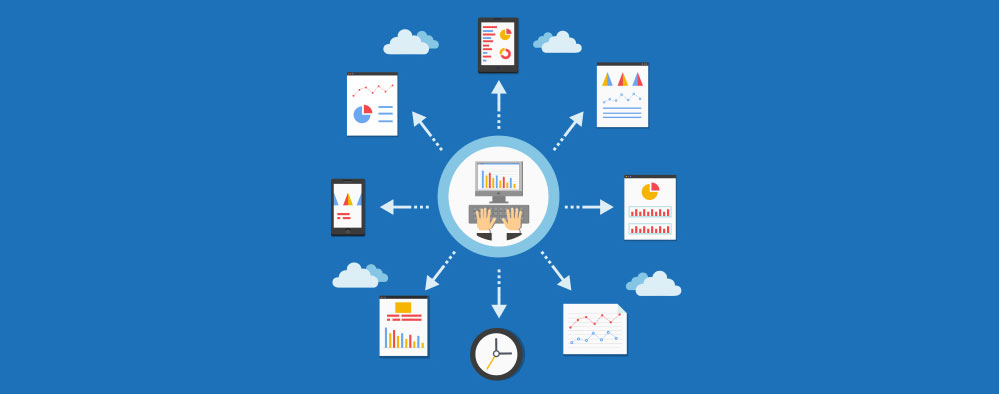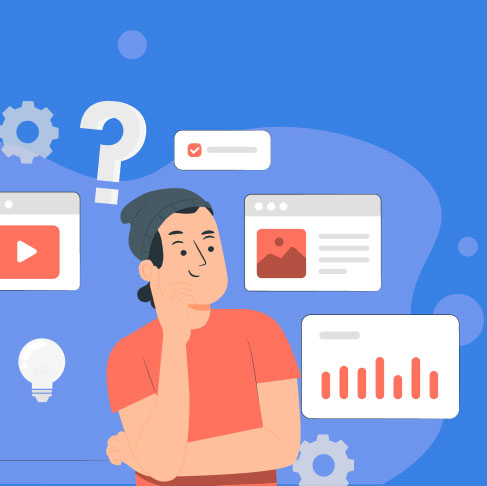SaaS Churn Rate: Essential Aspects Businesses Should Know
September 1, 2023 | Read Time : 3 mins
Table of Contents
In the rapidly evolving Software as a Service (SaaS) industry, where competition is fierce, and customer expectations are high, one metric reigns supreme in determining a SaaS business’s health and growth potential: the churn rate.
Churn rate, often called the “silent killer” of SaaS companies, is a critical metric that measures the rate at which customers cancel or discontinue their subscription to a service. In this blog, we’ll delve deep into the essential aspects that businesses operating in the SaaS industry need to know about churn rate, its implications, and strategies for churn reduction.
Introduction to SaaS Churn Rate
The SaaS churn rate is the ultimate indicator of customer retention, satisfaction, and business growth. It quantifies the percentage of customers who have unsubscribed or discontinued their subscription during a given period. This metric’s importance cannot be overstated, as it directly impacts revenue and profitability. A high churn rate leads to lost customers and hampers the potential for predictable and sustainable revenue streams.
Understanding churn rate is pivotal for SaaS businesses to gain insights into customer behaviours, preferences, and needs. By analyzing why customers leave, companies can fine-tune their strategies, enhance their offerings, and increase customer loyalty. This brings us to the various types of churn that can occur in the SaaS industry.
Types of Churn in SaaS
SaaS churn can manifest in different forms, each providing unique insights into the health of a business:
- Customer Churn: This type of churn refers to losing paying customers. It’s the most common interpretation of churn rate and directly impacts a company’s revenue.
- Revenue Churn: Revenue churn accounts for lost recurring revenue due to downgrades or plan changes within existing customers. It provides a more accurate picture of how changes in customer subscriptions affect revenue.
- User Churn: User churn considers individual users who stop using the Software within an organization. Even if the organization continues its subscription, user churn could point to user adoption and engagement issues.
Calculating Churn Rate
Calculating churn rate is straightforward, yet it’s essential to grasp the underlying formula to interpret the metric effectively:
Churn Rate (%) = (Number of Customers Lost during a Period / Total Customers at the Start of the Period) × 100
Let’s illustrate this with an example: Suppose a SaaS business starts with 1000 customers in January and loses 50 customers over that month. The churn rate for January would be (50 / 1000) × 100 = 5%.
Factors Influencing Churn
Several factors can contribute to the churn rate in the SaaS industry. It’s crucial to recognize these influencers and address them to mitigate churn effectively:
- Customer Satisfaction: Unhappy customers are more likely to churn. Monitoring customer feedback and sentiment can help identify areas for improvement.
- Product Quality: If a SaaS product fails to deliver value or is plagued by bugs, customers will be less inclined to continue using it.
- Pricing Strategy: Inaccurate pricing or a lack of perceived value can lead to customer attrition.
- Customer Support: Poor customer support experiences can sour relationships and drive customers away.
- Market Competition: A highly competitive market necessitates constant innovation to retain customers.

Customer Onboarding and Churn Prevention
The First Impression That Matters
When it comes to reducing churn rate, the initial stages of a customer’s journey are crucial. How customers interact with a SaaS product from the moment they sign up sets the tone for their entire experience. Customer onboarding is about guiding users through the setup process, showcasing the product’s value, and ensuring they can navigate and use the software effectively.
Crafting a Seamless Onboarding Experience
- Personalized Welcome: Send a personalized welcome message or email to new customers. This confirms their successful registration and provides them with the first touchpoint of your brand.
- Clear Value Proposition: From the start, communicate the unique value your SaaS product offers. How will it solve their problems or improve their workflows? Demonstrating this value early on is key to capturing their interest.
- Guided Tours: Interactive guided tours or tutorials can help new users navigate the product’s features. Highlight key functionalities, explain how to accomplish common tasks, and make them feel at ease.
- Progressive Onboarding: Don’t overwhelm users with all the features at once. Instead, adopt a progressive onboarding approach, introducing advanced features as users become more familiar with the basics.
- Interactive Demos: Consider offering interactive demos or sandbox environments where users can experiment with the product without fear of making mistakes.
Empowering Users Through Education
- Educational Resources: Provide access to a comprehensive knowledge base, video tutorials, and FAQs. These resources empower users to find answers to questions and learn at their own pace.
- Webinars and Workshops: Regularly scheduled or virtual workshops can help users discover the product’s capabilities. They also allow for real-time interaction with experts who can address queries.
- Personalized Support: Offer personalized assistance during the onboarding phase. Proactive engagement from your customer support team can go a long way in ensuring users get the most out of your product.
Monitoring and Engagement for Early Intervention
- Usage Analytics: Leverage user behaviour data to identify patterns. Are users getting stuck at a particular point? Are there features they rarely use? By spotting these signs early, you can proactively intervene.
- In-App Messages: Strategically timed in-app messages can guide users, offer tips, and keep them engaged. For instance, if a user hasn’t explored a specific feature, you could send a message explaining its benefits.
Creating a Lasting Impression
- Positive Closure: When users complete a specific task during onboarding, they celebrate their achievements with positive reinforcement. This can leave a lasting impression of a successful onboarding experience.
- Request Feedback: After the initial onboarding phase, solicit feedback from users. Their insights can help you refine the onboarding process and make improvements.
Realizing Churn Prevention through Onboarding
A well-executed onboarding process can significantly contribute to churn prevention. By making users feel confident and capable with your product early on, you increase the likelihood that they’ll see value and continue using it. Moreover, a positive onboarding experience fosters a sense of attachment to your brand, making users more resistant to competitors’ offerings.
Remember, churn prevention doesn’t stop after onboarding. It’s an ongoing effort that requires consistently delivering value, maintaining engagement, and addressing evolving user needs. Therefore, continuously assess the effectiveness of your onboarding strategies and adapt them based on user feedback and changing market dynamics. Doing so can lay a strong foundation for customer retention and long-term business success.
Strategies for Churn Reduction
- Product Enhancement: Regularly update and improve the product to maintain relevance and value.
- Customer Support Excellence: Provide efficient and responsive customer support to address issues promptly.
- Optimized Pricing Models: Regularly assess pricing to ensure it aligns with customer expectations and industry standards.
- Targeted Marketing Campaigns: Reach out to at-risk customers with tailored offers or incentives to re-engage them.
The Role of Customer Feedback
Listening to customer feedback is pivotal in understanding pain points and areas for improvement. Collect feedback through surveys, customer support interactions, and usage analytics. Act on this feedback to demonstrate that customers’ opinions matter and to continuously enhance the service.
Churn Rate Benchmarks
Industry benchmarks provide context for evaluating your churn rate. However, remember that benchmarks vary by industry, customer segment, and business model. Utilize these benchmarks as reference points but focus on improving your metrics to align with your business goals.






